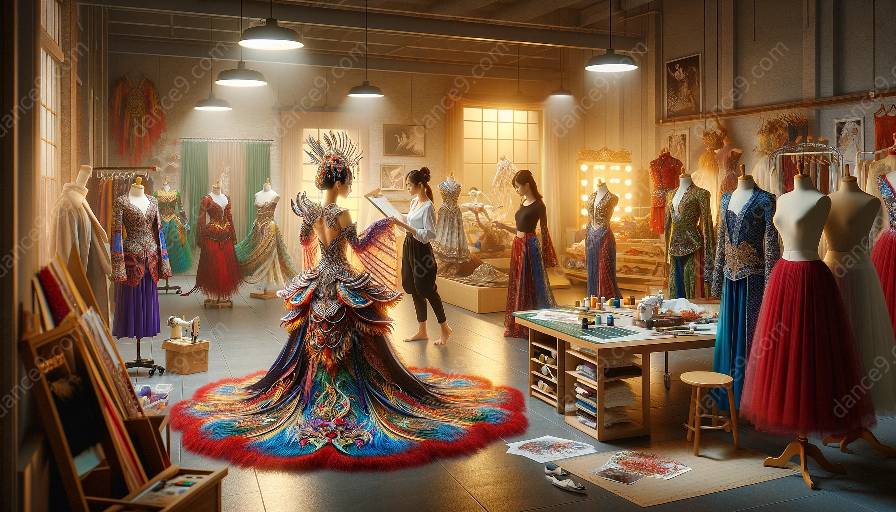Dance narratives are not only told through movements but also through the visual elements of costume design. Costumes have the power to transform dancers into characters, conveying emotions, and enhancing the storytelling aspect of dance performances.
Costumes play a vital role in character development, as they help the audience understand the personalities, motives, and emotions of the characters portrayed through dance. From classical ballet to contemporary dance, costumes contribute to the narrative by reflecting the historical context, cultural background, and the psychological state of the characters.
The Role of Costume Design in Conveying Emotions
Costumes are essential in expressing the emotions and intentions of the characters in a dance narrative. The color, fabric, and style of the costumes can signify various emotions such as joy, sorrow, love, or anger. For example, flowing and ethereal costumes may represent freedom and grace, while dark, structured costumes can convey strength and power.
Furthermore, the way costumes move with the dancers can also add depth to the emotional portrayal. The swaying of a skirt or the billowing of fabric can accentuate the movement, adding layers of expression to the character's emotions.
Creating Authentic Characters through Costume Design
Costumes aid in creating authentic and relatable characters within dance narratives. By integrating historically accurate costumes or culturally specific attire, dancers can embody the essence of their characters more convincingly. Whether it is a traditional folk dance or a contemporary piece, costumes provide visual cues that connect the characters to their cultural or historical context.
Moreover, the details of the costumes, such as accessories and embellishments, contribute to the authenticity and depth of the characters. A well-crafted costume can instantly transport the audience to a specific time and place, enriching the overall storytelling experience.
Enhancing the Visual Aesthetics and Symbolism through Costumes
Costumes add visual appeal to dance narratives and serve as symbolic elements that enhance the choreography. The visual aesthetic created by the costumes can complement the movements, accentuate the lines and shapes formed by the dancers, and contribute to the overall composition of the performance.
Furthermore, costumes can carry symbolic meanings that add layers of interpretation to the dance narrative. From traditional motifs and imagery to modern symbolism, costumes can be used to convey themes, narratives, and cultural messages, deepening the audience's understanding and connection to the performance.
Choreographing with Costumes in Mind
Effective costume design goes beyond mere aesthetics and should be integrated into the choreographic process. Choreographers often consider the costumes as integral components of the dance piece and design movements that complement the visual elements of the costumes.
The influence of costumes on choreography can be seen in the way dancers interact with their attire, utilizing props or accessories as extensions of their movements. This collaborative approach between costume designers and choreographers enhances the cohesion between visual and kinetic storytelling, resulting in a more immersive and engaging dance narrative.
Conclusion
In conclusion, costumes play a significant role in character development within dance narratives. Through color, fabric, style, and cultural significance, costumes contribute to the emotional expression, authenticity, visual aesthetics, and choreographic integration of dance performances. Understanding the impact of costume design on character development allows for a deeper appreciation of the storytelling potential inherent in dance.











































